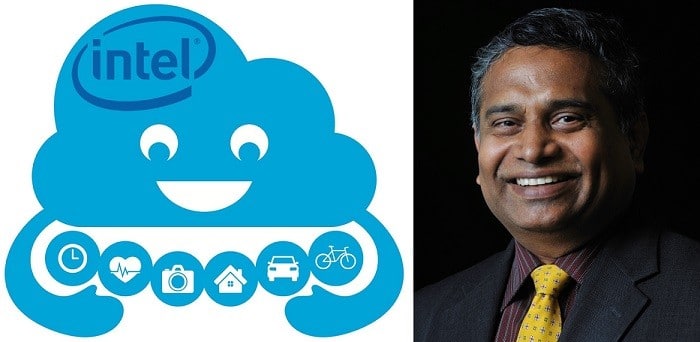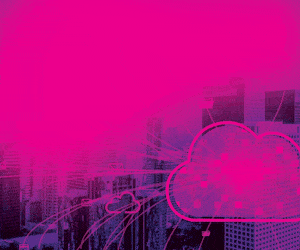Tech media has covered and re-covered the Internet of Things (IoT) advances happening in the consumer electronics segments so extensively that it is no longernews. However, there is another more lucrative segment where IoT is making quite a splash.
Follow EFY’s Abhishek Mutha, as he speaks with S. Natarajan, Senior Program Manager – India Strategy & Planning, Intel India, to see what’s happening with IoT and the industrial segment.
Q. What is the difference between IoT in the consumer and industrial segments?
A. If you consider the area of energy, smart grids employs a usage model which may probably leverage a combination of technologies related to cellular type of connectivity for communication. For example, smart meters have the ability to connect to some of the backing mechanisms using cellular modems or power line carrier communication that provides the ability to use the power line itself to communicate the information. Thus, the communication on the non-consumer side would be very much user-scenario based.From a connectivity/technology perspective, it will definitely be a combination of existing technologies because here the amount of information which needs to sent over the network would be much more relevant depending on the industry. It could be very less compared to the consumer sector. The type of connectivity seen here would be more ‘previous generation’ or the ‘current generation’ versions — technologies like LTE might not even be required to communicate. Combinations like WPAN (Wireless Personal Area Network) as well as lower spectrum technologies such as 2G or 2.5G are what would be considered, because the cost and amount of data is very different with respect to the consumer.
Q. Where do you see the Internet of Things and its technologies creating the most impact?
A. Impact in areas such as telecom, transportation and housing industry are visible already but from an overall value perspective, energy and health would be two areas that require attention with respect to implementation of Internet of Things. In the energy sector, the consumption and generation gap is huge and losses are very high and even in the healthcare industry, the options available to people outside the city are very minimal. The impact of IoT on us can be confirmed by the fact that we have recently formed a division called IoT Solutions Division, part of the Intelligence Systems Group, which will be putting a big focus on making IoT a successful area for Intel.
Q. Security in energy must be very important. How is it being handled?
A. There are efforts to address the security aspects of the sensors. As far as Intel in concerned, we understand that security is not just required for the traditional PC server and enterprise type of networks but even consumer devices. One of the reason we acquired McAfee is to address the importance of security in the industry. The way we look at implementing security for IoT areas is in multiple ways. One is that we are making sure that we leverage the technologies that we have from McAfee’s side to address specific embedded use cases wherein we make sure that we take care of some of the security aspects from the level of OS all the way down to the silicon or the chip itself. When it comes to other aspects such as the sensors (where data communication takes place) and the network, there are different ways of securing. We have some platform woven technologies, as a part of our processor platforms, which addresses that security aspect. We call these traditional technologies as Trusted Execution Technology (TXT) under which there are multiple forms of safety and security measures available for customers building applications in IoT or other areas.
Q. Which are the areas in India, where IoT devices could have maximum impact?
A. As far as India is concerned, I would say, the two sectors are transportation and energy, which is more connected with research. There are some verticals where the concept of IoT is already implemented, and in some verticals it is being experimented, like the smart grid in India.Let me elaborate on the significance of diesel in India. As you know, diesel is subsidised in our country. It gets used in different industries like the telecom towers for example. Most of the telecom towers are located in areas where there is no power. Hence they have to be powered by diesel generators. Also, diesel theft is very common in this particular field and IoT proves to be very handy to tackle this issue. The telecom towers are already using IoT concept in a very efficient way to manage diesel.
Q. Out of curiosity, could you explain briefly how IoT is used to avoid this diesel theft?
A. To make sure the telecom towers are running in an optimal way, there is a need to understand the level of diesel in those diesel generators located as part of the tower, make sure that it gets replenished on time and avoid theft. There are managed by the IoT concept where sensors are involved that detect everything be it the level of diesel and communicate back to the system. On the transportation side, the concept of IoT is used at multiple levels. One is the oil and natural gas industry. They have to manage their fleets like the location of a particular oil tanker since it is of high value and sensitive material.
Q. What are some interesting real world examples of Internet of Things in industrial settings?
A. Smart Home is really coming up in a big way. Here, we are talking about multiple functionalities at home like ability to manage gadgets like refrigerator, air conditioner, washing machine, etc. It could also be the entertainment devices such as a television or music system. Also, the ability to manage your energy consumption giving information on the device consuming the most energy for instance would be another instance. Many of the residential complexes are installed with cameras to monitor certain areas remotely. This is another upcoming usage model where there is a lot of scope. The volumes of such products are low but it has a good scope to become standard.
Q. What kind of businesses, you think, will expand and, what kind of businesses will disappear with the advent of IoT?
A. The current trend is of smart devices. Considering the consumer side, the simple devices without intelligence will see a downfall. The trend of smartphones, as we already see, is booming when compared to feature phones. In terms of the non-consumer industry, the solutions available today will undergo an evolution because higher the availability of connectivity options, the solution will have to keep that particular trend in mind and evolve. Today, if there is a technology company defining a solution where they are not keeping up with the trend of the IoT concept, their solutions would not be relevant and therefore they would disappear. Hence, most of the solutions in these verticals will have to absorb the concept of IoT and then evolve in terms of features.















